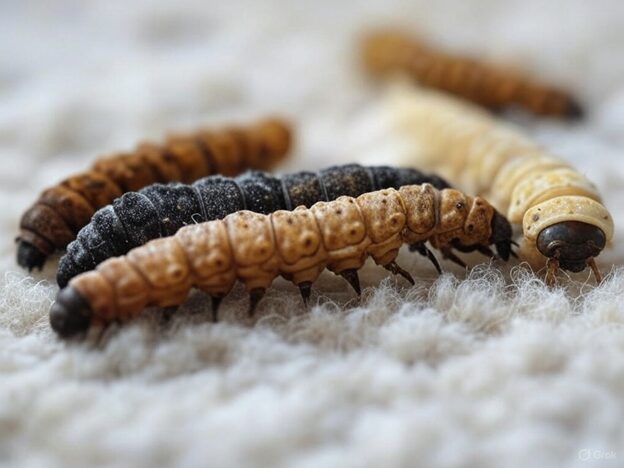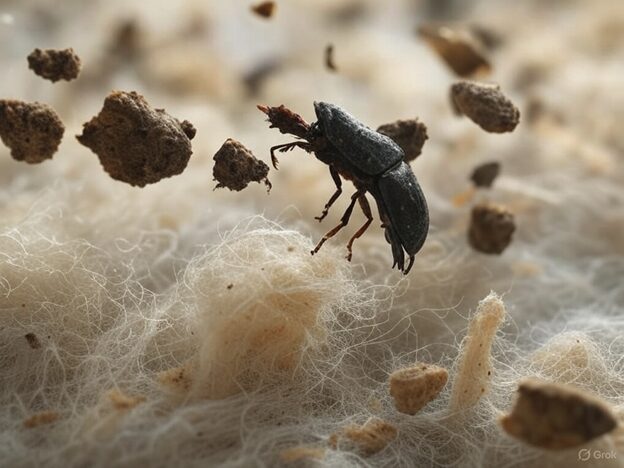You’d test your home for something like this to get a detailed picture of the tiny stuff floating around in your air—think dust, pollen, smoke, or even chemical residues. Particles matter because they can mess with your health, especially if you’re breathing them in all day.
Why bother? If you’ve got allergies, asthma, or unexplained symptoms like coughing or fatigue, this kind of test could pinpoint culprits. Smaller particles (say, PM2.5 or PM10) can get deep into your lungs or even your bloodstream, potentially causing inflammation or worse over time. Bigger particles might just be annoying—like dust settling everywhere—but could still carry allergens.
What is the purpose of testing the air for Dander?

Testing the air for dander in your home is all about figuring out if pet or human skin flakes—yep, dander isn’t just from your furry friends—are floating around and causing trouble. Dander consists of tiny, dry skin particles that shed naturally from animals like cats, dogs, or even us humans. It’s super lightweight, so it hangs out in the air or settles on surfaces, waiting to be kicked up again when you walk by or flop on the couch.
The main purpose of testing for it is to check if it’s triggering allergies or asthma. Dander’s a top allergen—proteins in it (like Fel d 1 from cats or Can f 1 from dogs) can make your immune system freak out if you’re sensitive. Symptoms might be sneezing, itchy eyes, runny nose, or wheezing, especially if you’ve noticed they flare up at home. If you’ve got pets, kids with sniffles, or guests who react when they visit, testing can confirm if dander’s the culprit.
You might also test to see how well your cleaning or air filtration game is holding up. HEPA filters and vacuuming can cut dander levels, but if the air’s still loaded, you’d know to tweak your setup—maybe more frequent grooming for Fido or a beefier purifier. It’s also handy if you’re moving into a place where pets lived before; dander sticks around in carpets or curtains like an unwanted houseguest.
Why do I want to test my air for Cellulose Fibers?

It looks like you meant “Why do I want to test my air for cellulose fibers?”—just a small typo there. Let’s dive into why you’d want to check for cellulose fibers in your home’s air.
Cellulose fibers are tiny particles that come from plant-based materials—think wood, paper, cotton, or even some types of insulation like blown-in cellulose made from recycled newspaper. They’re not inherently toxic like asbestos, but they can still stir up issues depending on how much is floating around and who’s breathing it. Testing for them helps you understand if they’re a hidden factor in your indoor air quality.
You’d want to test for cellulose fibers if you’re noticing signs that something’s off—like persistent dustiness, allergy flare-ups (sneezing, itchy eyes, or stuffy nose), or a scratchy throat that won’t quit. These fibers can become airborne from things like deteriorating insulation, heavy use of paper products (think shredding or unpacking boxes), or even natural wear on wooden furniture or flooring. If you’ve got a fireplace or wood stove, burning wood can release fine cellulose particles too.
Another reason? Health and comfort. While cellulose itself isn’t a big bad guy, high levels of any particulate matter can irritate your lungs, especially if you’ve got asthma or sensitivities. Plus, if mold’s hitching a ride on those fibers—say, from damp insulation or a leaky wall—it could amplify the problem. Testing tells you if concentrations are above normal background levels (there’s no strict “safe” limit for cellulose specifically, but PM2.5 or PM10 guidelines, like 15-35 µg/m³ daily averages from the EPA, give a ballpark for fine particles).
You might also test after a specific event—like a renovation where insulation was disturbed, or if you’ve moved into an older home with questionable materials.
It’s really about peace of mind and control. If the air’s clean, great. If not, you can tackle it—better filters, more vacuuming, or fixing a source like a crumbling ceiling panel.
Why would I test the air in my home for Synthetic Fibers?

Testing your home’s air for synthetic fibers makes sense if you’re trying to track down tiny man-made particles that could be messing with your air quality or health. Synthetic fibers—like polyester, nylon, acrylic, or polypropylene—come from stuff like carpets, rugs, furniture upholstery, clothing, or even dryer lint. They’re tougher and more durable than natural fibers, but that also means they can linger in your air when they break off and get kicked up.
You’d want to test for them if you’re noticing signs they might be a problem. Maybe you’ve got unexplained allergies—itchy eyes, sneezing, or a runny nose—that flare up indoors. Synthetic fibers themselves aren’t usually allergens, but they can carry dust, pet dander, or chemical residues (like flame retardants or dyes) that are. If you’ve got asthma or sensitive lungs, high levels of any airborne particles—including these—could irritate your airways, making you cough or feel tight-chested.
Another reason? You might suspect they’re building up from specific sources. New synthetic carpets or furniture can shed microfibers, especially in the first few months. Heavy foot traffic, vacuuming, or kids roughhousing on a polyester rug can send them flying. Even washing and drying synthetic clothes releases them into the air via lint. If your home’s tightly sealed with poor ventilation, those fibers just hang out longer, accumulating in the air you breathe.
Why care? Beyond allergies, there’s growing chatter about microplastics—tiny synthetic fragments—including fibers. Inhaling them might not have a clear, proven health impact yet (research is ongoing), but studies (like one from Environmental Science & Technology, 2021) show we’re definitely breathing them in indoors, sometimes at higher rates than outdoors. Testing lets you quantify it—say, fibers per cubic meter—so you can decide if it’s worth worrying about or acting on.
You might also test after moving into a place decked out with synthetic stuff, or if you’ve noticed more dust settling despite cleaning. Air samplers or particle counters can pick up these fibers, often lumped into broader particulate measures like PM2.5 or PM10. If levels are high, you could swap out sources (like a nylon rug for cotton), boost ventilation, or grab a HEPA air purifier.
What is the purpose of testing the air for Aciniform-like Soot?

Testing your home’s air for Aciniform – like soot is about checking for a specific type of nasty particle that could signal pollution or health risks. “Aciniform” refers to a grape-like, clustered structure—think tiny carbon blobs stuck together. In soot terms, this usually points to fine particulate matter from incomplete combustion, like what you’d get from burning fossil fuels, wood, or even candles. It’s not a household term, so I’m guessing you’re digging into some detailed air quality report or concern—let’s break it down.
The purpose of testing for this is to see if your air’s carrying these ultrafine carbon particles, which are often part of PM2.5 (particles smaller than 2.5 micrometers). Why? They’re small enough to sneak deep into your lungs or even your bloodstream, potentially causing trouble. Short-term, high levels might irritate your throat or make you cough. Long-term, studies—like from the World Health Organization—link soot exposure to heart disease, lung issues, or even cancer, since it can carry toxic hitchhikers like polycyclic aromatic hydrocarbons (PAHs).
You’d test for Aciniform -like soot if you suspect it’s coming from somewhere specific. Maybe you’ve got a wood-burning fireplace, a diesel generator nearby, or live close to traffic or industrial zones where exhaust pumps out this stuff. Even indoor sources—like frequent candle use, cooking with gas, or a smoky kitchen mishap—could contribute. If your home’s poorly ventilated, it traps that soot inside, letting levels creep up.
The “aciniform” bit suggests you’re looking at how the soot’s shaped, which matters for identifying its source. Clustered soot often ties to high-temperature burning (think car engines or coal stoves) versus, say, loose ash from a campfire. Testing—usually with an air sampler or electron microscopy—can confirm its presence and concentration, measured in micrograms per cubic meter. For context, the EPA’s PM2.5 standard is 35 µg/m³ over 24 hours; soot’s a chunk of that in polluted areas.
Why bother? If levels are high, you’d know to cut the source (less wood-burning, better stove filters) or up your defenses (air purifiers, more airflow). It’s about keeping your air safe, especially if you’ve got kids, elderly folks, or anyone with breathing issues at home.
Why would I test my air in the home for Ash and Char – Like Soot?

Testing your home’s air for ash, char, or soot-like particles could be a good idea if you suspect contamination or poor air quality that might affect your health or living environment. Here are some reasons why you might consider it:
- Wildfires or Outdoor Burning: If you live near an area with recent wildfires, controlled burns, or even neighbors using fire pits, ash and soot can drift into your home through open windows, ventilation systems, or on clothing. These particles can linger in the air, potentially causing respiratory irritation.
- Fireplace or Wood Stove Use: If you have a fireplace or wood-burning stove, incomplete combustion or poor ventilation could leave ash and char particles in your indoor air. Over time, this might settle as soot on surfaces or remain airborne, impacting air quality.
- Health Concerns: Fine particles like soot (often tiny enough to inhale deeply into your lungs) can aggravate conditions like asthma, allergies, or other respiratory issues. If you or someone in your household is experiencing unexplained coughing, wheezing, or irritation, it might be worth checking for these pollutants.
- Industrial or Urban Exposure: If you’re in a city or near factories, coal plants, or heavy traffic, soot from exhausts or emissions can infiltrate your home. Testing could reveal if external pollution is a problem.
- Recent Fire Damage: If your home or a nearby property had a fire, even if it was contained, ash and char could have spread through the air or HVAC system. This might not always be visible but could still affect air quality.
- Suspicious Residue: If you’re noticing black dust or grime on furniture, walls, or filters that doesn’t seem normal, it could be soot. Testing the air can confirm if it’s an ongoing issue rather than a one-time event.
Why It Matters
Ash and soot aren’t just messy—they can contain harmful substances like carbon compounds, heavy metals, or polycyclic aromatic hydrocarbons (PAHs), some of which are carcinogenic. Long-term exposure, even in small amounts, might pose risks, especially for kids, the elderly, or anyone with pre-existing health conditions.
What is the purpose of testing the air for Fiberglass?

Testing the air in your home for fiberglass is typically done to assess whether tiny fiberglass particles or fibers are present in the air you’re breathing, as they can pose health risks or indicate underlying issues with insulation, construction materials, or air quality. Here’s why it might be worth considering:
- Health Protection:
- Fiberglass is made of tiny glass fibers, and if these become airborne, they can be inhaled. Inhalation may irritate the lungs, throat, or nasal passages, potentially causing coughing, wheezing, or shortness of breath.
- Prolonged exposure to high levels might lead to more serious respiratory issues, though evidence on long-term effects is still debated. People with asthma or sensitive skin might also experience irritation or rashes from contact.
- Testing helps confirm if fiberglass is a culprit if you or others are having unexplained symptoms.
- Identifying Contamination from Construction or Renovation:
- If you’ve recently had work done—like installing or removing insulation, cutting drywall, or handling fiberglass-containing materials (e.g., batts, boards, or duct liners)—fibers might have been released into the air.
- Poor cleanup or lack of containment during such projects can leave particles circulating, and testing pinpoints if this is happening.
- Checking HVAC System Issues:
- Some air ducts or filters use fiberglass components. If these degrade or get damaged, fibers can break off and get blown into your living space. Testing the air can reveal if your heating or cooling system is spreading contamination.
- Verifying Material Deterioration:
- Over time, old fiberglass insulation in walls, attics, or crawlspaces can break down, especially if disturbed by pests, water damage, or vibrations. Testing helps determine if aging materials are releasing fibers into your indoor environment.
- Ensuring Safety After Damage:
- Events like floods, fires, or structural repairs can expose or dislodge fiberglass insulation. If it’s not properly sealed or cleaned up, fibers can become airborne. Testing confirms whether the air is safe post-incident.
- Regulatory or Legal Reasons:
- In some cases—like rental disputes, workplace safety concerns, or home inspections—testing might be done to document fiberglass levels for compliance with air quality standards or to support claims about habitability.
Why It Matters
Fiberglass particles are often microscopic, so you might not see them even if they’re present. Unlike ash or soot, they don’t leave obvious black residue, making air testing one of the few reliable ways to detect them. While fiberglass isn’t classified as a carcinogen like asbestos, its physical properties (sharp, splinter-like fibers) can still cause mechanical irritation or inflammation in the body.
Why would I test my air in the home for Wood Fibers?

Testing your home’s air for wood fibers might not be as common as testing for things like mold or soot, but there are specific scenarios where it could be useful. Wood fibers—tiny particles or dust from wood—can become airborne and affect air quality, health, or even safety. Here’s why you might consider it:
- Health Concerns:
- Inhaling wood dust or fibers can irritate your respiratory system, causing symptoms like coughing, sneezing, or wheezing. This is especially true for fine particles that can reach deep into your lungs.
- Some people are allergic to certain types of wood (e.g., cedar, oak, or pine), and airborne fibers could trigger reactions like itchy eyes, runny nose, or asthma flare-ups.
- Long-term exposure to high levels of wood dust (like in occupational settings) is linked to nasal cancer risks with hardwoods, though this is less likely in a home unless exposure is extreme.
- Woodworking or DIY Projects:
- If you or someone in your home does woodworking—sawing, sanding, or carving—fine wood fibers can get kicked into the air. Even with a shop vac or mask, some particles might drift into living spaces, especially if the workspace isn’t fully isolated.
- Testing could confirm if these activities are impacting your indoor air quality beyond the workshop.
- Furniture or Flooring Installation:
- Installing hardwood floors, cutting wooden furniture, or sanding wood surfaces during a reno can release fibers into the air. If the cleanup wasn’t thorough or ventilation was poor, testing might show if residual particles are lingering.
- Degrading Wood Materials:
- Old wooden structures, furniture, or paneling in your home could break down over time—especially if exposed to moisture, pests like termites, or physical wear. This degradation can release fibers or dust into the air, and testing would reveal if it’s a problem.
- Fireplace or Wood Stove Use:
- Burning wood produces ash, but it can also release tiny wood particles if the wood isn’t fully combusted or if you’re handling logs indoors. Testing could help if you suspect this is adding to airborne debris beyond just soot.
- Indoor Plants or Mulch:
- If you use wood chips, sawdust, or mulch for indoor gardening or decor, these could release fine fibers into the air, especially if disturbed. Testing might be warranted if you notice dust buildup or respiratory issues tied to these sources.
- Industrial or External Sources:
- Living near a lumber mill, carpentry shop, or construction site could mean wood fibers drift into your home through windows or vents. Testing would check if outdoor activity is infiltrating your air.
Why It Matters
Wood fibers vary in size, but the smaller ones (like PM10 or PM2.5) can stay suspended in the air and get inhaled. While they’re not as inherently toxic as fiberglass or asbestos, their impact depends on quantity, exposure time, and your sensitivity. Plus, wood dust can carry mold spores or chemical treatments (e.g., from pressure-treated lumber), adding another layer of concern.
Why would I test my air in the home for Pollen?

Testing your home’s air for pollen makes sense if you’re trying to figure out whether outdoor allergens are sneaking indoors or if something inside is mimicking pollen-related issues. Pollen is a common trigger for allergies and respiratory problems, and monitoring it can help you manage health or pinpoint environmental culprits. Here’s why you might do it:
- Allergy Management:
- Pollen from trees, grasses, weeds, or flowers can cause sneezing, itchy eyes, runny nose, or asthma attacks in allergic individuals. If you or someone in your home has seasonal allergies (hay fever), testing can confirm if pollen is getting inside and worsening symptoms year-round or unexpectedly.
- Even if it’s not “pollen season” (e.g., spring or fall), some indoor sources might mimic outdoor pollen exposure.
- Tracking Outdoor Infiltration:
- Pollen can enter through open windows, doors, vents, or on clothing and pets. If you live near fields, forests, or urban green spaces with high pollen counts, testing can show if your home’s air is being contaminated despite closed windows or filters.
- It’s useful during high-pollen periods (check local pollen forecasts for March 07, 2025, if you’re curious) to see if your defenses—like air purifiers or HVAC filters—are holding up.
- Indoor Plants:
- Some houseplants (e.g., flowering ones like lilies or those with wind-pollinated relatives) can release pollen indoors. If you’ve added new greenery and noticed allergy-like symptoms, testing could reveal if they’re shedding pollen into your air.
- Pet or Clothing Transfer:
- Pets that roam outside or people coming in from pollen-heavy areas can carry it inside on fur, skin, or fabric. Testing might show if this is a significant source, especially if symptoms flare after outdoor activity.
- Unexplained Respiratory Issues:
- If you’re coughing, wheezing, or feeling congested indoors without an obvious cause (like a cold), pollen could be a sneaky contributor. Testing differentiates it from dust, mold, or other irritants.
- Evaluating Air Filtration:
- If you’ve invested in HEPA filters, air purifiers, or sealed windows to keep allergens out, testing for pollen checks if they’re working. High levels might mean it’s time to upgrade your system or change filters.
- Renovation or Stored Items:
- Disturbing old furniture, carpets, or attic boxes could release trapped pollen from past seasons. Testing can confirm if this is stirring up your air, especially in older homes.
Why It Matters
Pollen grains are tiny—often 10-100 microns—and can float easily into your lungs, triggering inflammation or immune responses in sensitive people. Even low levels can build up over time indoors, creating a constant low-grade irritant. For the 10-30% of people with pollen allergies worldwide, this can turn a “safe” home into a problem zone.
Purposes of Testing for Plant Hair in the Air

Testing your home’s air for plant hairs—those tiny, often microscopic structures like trichomes or fuzz from plants—might seem niche, but it can serve specific purposes if you suspect they’re affecting your air quality or health. Plant hairs differ from pollen in that they’re not reproductive particles but rather physical parts of leaves, stems, or seeds, often designed for protection or dispersal. Here’s why you might test for them:
- Allergy or Irritation Concerns:
- Some plant hairs, like those from stinging nettles or certain fuzzy-leaved species (e.g., lamb’s ear or mullein), can irritate skin, eyes, or respiratory passages if they become airborne and are inhaled or contacted. Testing can confirm if they’re present in your air and causing symptoms like itching, coughing, or throat scratchiness.
- Unlike pollen, which triggers allergic immune responses, plant hairs often cause mechanical irritation due to their shape or barbs.
- Indoor Plants as a Source:
- Houseplants with hairy leaves or stems (e.g., African violets, some succulents, or fuzzy herbs) might shed trichomes into the air, especially if disturbed by watering, moving, or fans. Testing could reveal if they’re contributing to indoor air debris.
- Outdoor Plant Influence:
- Plants like cottonwood (with its fuzzy seeds), thistles, or dandelions produce hairy structures that can float long distances and enter homes through windows, vents, or on clothing. If you live near such vegetation, testing might show if these are infiltrating your space, especially during seed-dispersal seasons.
- Gardening or Yard Work:
- Handling plants with hairy parts—like pruning roses (which have glandular hairs) or clearing weeds—can release these particles indoors if you track them in. Testing helps determine if your gardening habits are impacting air quality beyond just dirt or pollen.
- Textile or Material Contamination:
- Natural fibers in rugs, furniture, or decor (e.g., cotton, jute, or hemp) might release plant hairs over time, especially if they’re old or fraying. Testing could identify if these are floating around, particularly if you notice dust with a fibrous texture.
- Unexplained Respiratory or Skin Reactions:
- If you’re experiencing symptoms like a persistent tickle in your throat, watery eyes, or skin rashes indoors—without clear ties to pollen, dust, or pets—plant hairs could be a hidden irritant. Testing isolates them as a possible cause.
- Post-Disturbance Cleanup:
- After events like storms, landscaping, or moving dried plant material (e.g., old wreaths or potpourri), plant hairs might get stirred up. Testing checks if they’re lingering in the air rather than settling out.
Why It Matters
Plant hairs vary widely—some are soft and harmless, while others are barbed, brittle, or even chemically irritating (like nettles with histamine-containing tips). When airborne, they can act like tiny splinters in your respiratory tract or on skin, and their lightweight nature means they can stay suspended longer than heavier particles like ash. While not as widely studied as pollen or mold, they’re a known issue in certain agricultural or botanical contexts and could matter in a home under the right conditions.
Reasons to Test for Animal Hair in the Air?

Testing your home’s air for plant hairs—those tiny, often microscopic structures like trichomes or fuzz from plants—might seem niche, but it can serve specific purposes if you suspect they’re affecting your air quality or health. Plant hairs differ from pollen in that they’re not reproductive particles but rather physical parts of leaves, stems, or seeds, often designed for protection or dispersal. Here’s why you might test for them:
- Allergy or Asthma Control:
- Animal hair itself isn’t usually the allergen—it’s the proteins in dander, saliva, or urine that stick to hair that trigger reactions like sneezing, itchy eyes, or wheezing. Testing can confirm if pet hair (or wild animal hair) is carrying these allergens into your air, especially if someone in your home is sensitive.
- Even if you don’t own pets, hair from past occupants or visitors could linger and cause issues.
- Pet Shedding Assessment:
- If you have furry pets (dogs, cats, rabbits, etc.), their shedding can release hair and dander into the air, particularly during grooming or heavy shed seasons (e.g., spring or fall). Testing shows how much is circulating and whether your vacuuming or air purifiers are keeping up.
- Unexplained Symptoms:
- If you’re experiencing respiratory irritation, skin rashes, or allergy-like symptoms indoors without an obvious cause, airborne animal hair fragments could be to blame. Testing helps rule it in or out compared to pollen, dust, or mold.
- Outdoor Animal Intrusion:
- Hair from wild animals (e.g., mice, squirrels, or birds) or strays can enter through vents, open windows, or gaps if they’re nesting nearby or shedding outside. Testing might reveal if critters are indirectly affecting your air quality.
- HVAC Contamination:
- Pet hair or dander can get sucked into heating/cooling systems and redistributed throughout your home. If your filters are clogged or you notice a musty “pet smell” from vents, testing can check if animal hair is a persistent airborne issue.
- Post-Move or Renovation Concerns:
- Moving into a new home or renovating could stir up hair from previous pets trapped in carpets, ducts, or furniture. Testing identifies if this is a lingering problem, especially if you’re pet-free but still symptomatic.
- Evaluating Cleaning Effectiveness:
- If you’ve got pets and you’re diligent about cleaning (HEPA filters, frequent vacuuming), testing can verify if your efforts are reducing airborne hair and dander or if you need a deeper strategy (e.g., duct cleaning).
- Child or Elderly Safety:
- For households with infants, elderly folks, or immunocompromised people, airborne animal particles might pose a bigger risk to respiratory health. Testing ensures the air is safe for vulnerable lungs.
Why It Matters
Animal hair fragments and dander are lightweight enough to stay airborne for a while, especially in homes with fans or forced-air systems. The allergens they carry (like Fel d 1 from cats or Can f 1 from dogs) are sticky and persistent, meaning even small amounts can build up and trigger reactions over time. Plus, hair can trap other irritants like dust or pollen, compounding the problem.
Purposes of Testing for Human Hair in the Air?

- Allergy or Sensitivity Investigation:
- Though rare, some people might react to human dander (dead skin cells) or proteins from hair, similar to pet allergies. If you or someone in your home has unexplained itching, respiratory irritation, or rashes, testing could check if human hair fragments are a factor, especially in crowded or poorly ventilated spaces.
- High-Occupancy Environments:
- In homes with many people—think big families, roommates, or frequent guests—hair and scalp particles can accumulate in the air, especially if there’s lots of brushing, blow-drying, or shedding (e.g., from long hair). Testing might reveal if this contributes to dust or allergen loads.
- Post-Renovation or Cleaning Assessment:
- Renovations, deep cleaning, or moving furniture can disturb old dust containing human hair fragments from past occupants. Testing could confirm if this is stirring up your air, particularly in older homes or rentals with heavy prior use.
- HVAC System Check:
- Hair and dander from humans can get pulled into heating or cooling systems, especially if air intakes are near bathrooms or bedrooms where hair is shed or groomed. Testing might show if these particles are being redistributed, potentially clogging filters or degrading air quality.
- Unusual Dust Composition:
- If you notice persistent dust that seems fibrous or linked to human activity (e.g., after haircuts at home), testing can identify if human hair fragments are a significant component versus pet hair, pollen, or other debris.
- Health Symptom Correlation:
- Persistent coughing, eye irritation, or sinus issues without a clear cause (like mold or pets) might prompt testing for less obvious irritants like human hair particles. This is more likely in dry climates or homes with forced-air systems that keep particles aloft.
- Forensic or Hygienic Curiosity:
- In rare cases, you might test for human hair in the air to assess cleanliness (e.g., in a sterile home lab) or for forensic purposes (e.g., confirming occupancy patterns). This is less practical for most but could apply in specific scenarios.
Why It Matters
Human hair fragments are typically small—broken ends or split strands—and often carry scalp skin cells, sweat, or oils. These can become part of the indoor particulate mix, especially in homes with low ventilation or high human activity. While not as allergenic as pet dander (due to lower levels of specific proteins like Fel d 1), they can still act as physical irritants or contribute to overall dust burden. In most cases, though, human hair in the air is a minor player compared to other pollutants unless conditions amplify its presence.
Why should we test our home for Opaque Particles in the air?

Testing your home for opaque particles in the air isn’t a standard practice unless you’re dealing with a specific concern tied to air quality or unusual particulate matter. I assume you might mean something like particulate pollution (e.g., PM2.5 or PM10), dust, smoke, or other airborne contaminants that could affect health or visibility. If that’s off-base, feel free to clarify!
Here’s why testing for airborne particles (opaque or otherwise) might matter:
- Health Risks: Fine particles, especially those small enough to inhale deeply (like PM2.5), can lodge in your lungs or even enter your bloodstream. Over time, this can lead to respiratory issues, heart problems, or aggravate conditions like asthma. The WHO links long-term exposure to millions of premature deaths yearly—serious stuff if your indoor air’s loaded with them.
- Source Identification: If you’ve got visible haze, odd smells, or a dusty vibe indoors, testing could pinpoint whether it’s from cooking, smoking, mold, construction nearby, or something weirder. Opaque particles might suggest combustion byproducts (soot, ash) or industrial crud seeping in.
- Peace of Mind: If you live near a highway, factory, or wildfire-prone area, invisible threats could be sneaking inside. Testing confirms whether your air’s clean or if you need filtration—like a HEPA purifier—to fight back.
- Special Cases: If “opaque particles” refers to something niche (say, a sci-fi scenario or a specific chemical spill), testing could rule out hazards normal air quality checks miss. But that’s speculative without more context.
Reasons to Test for Silicates in the Air?

Testing for silicates in the air isn’t a common household concern unless you’ve got a specific reason to suspect their presence. Silicates are compounds containing silicon and oxygen, often found in dust, soil, or industrial materials like sand, quartz, or certain minerals. Here’s why you might consider testing for them:
Occupational Exposure Risks: If you live near a quarry, construction site, or industry (e.g., mining, glassmaking, or ceramics), airborne silicate dust—like crystalline silica—could drift into your space. Inhaling fine silica particles over time can cause silicosis, a nasty lung disease that scars tissue and cuts breathing capacity. The CDC says it’s irreversible and linked to thousands of cases in workers, so proximity to those sources might warrant a check.
Health Symptoms: If you or your household are dealing with persistent respiratory irritation—coughing, wheezing, or shortness of breath—and standard allergens aren’t the culprit, silicate dust could be a stealth suspect. Long-term exposure to crystalline silica also ups risks for lung cancer or COPD, per OSHA data. Testing would confirm if it’s a factor.
Renovation or Environmental Fallout: Disturbing old building materials (like concrete, brick, or stone) during home renos can kick up silicate particles. Same goes if wildfires or volcanic ash (rich in silicates) have hit your area—think 2020’s West Coast fires or past eruptions like Mount St. Helens. Testing could reveal if lingering dust is a threat.
Water or Soil Intrusion: If your home’s near eroding silicate-rich soil or you’ve got hard water leaving mineral deposits, fine particles might aerosolize indoors. Less likely, but possible if your ventilation’s pulling in outdoor crud.

Testing for gypsum in the air isn’t a typical home concern unless you’ve got a unique situation tied to its presence. Gypsum is a soft mineral (calcium sulfate dihydrate) used in drywall, plaster, and soil amendments, so airborne gypsum would likely come from dust or particles in specific contexts. Here’s why you might test for it:
- Construction or Renovation Dust: If you’re tearing out walls, sanding drywall, or working with plaster, gypsum particles can get kicked up. While gypsum itself isn’t highly toxic, inhaling the dust might irritate your nose, throat, or lungs—especially if you’re sensitive. Testing could confirm if it’s lingering post-project and messing with air quality.
- Industrial or Environmental Exposure: Living near a gypsum mine, processing plant, or heavy construction zone could mean airborne gypsum dust drifts your way. The USGS notes the U.S. produces millions of tons yearly, so if you’re downwind, fine particles might infiltrate. Testing would check if levels are notable.
- Health Complaints: Persistent eye irritation, coughing, or sinus issues with no obvious cause might point to dust like gypsum, especially if you’ve got a source nearby. It’s not as dangerous as silica (no silicosis risk), but the EPA flags particulate matter in general as a respiratory stressor. Testing could rule it in or out.
- Mold or Material Breakdown: Gypsum in drywall can degrade if water-damaged, potentially releasing particles or sulfur compounds if mold sets in. If your home’s had leaks or flooding, testing might reveal if crumbling gypsum’s adding to air woes—though mold’s usually the bigger worry there.
- Agricultural Runoff: If you’re near fields using gypsum as a soil conditioner, wind could carry fine particles. Rare for homes, but testing might matter if you’re in a rural hotspot and noticing haze.
Why should we test our home for Talc in the air?

Testing your home for talc in the air isn’t a routine necessity unless you’ve got a specific reason to suspect its presence. Talc is a soft mineral (hydrated magnesium silicate) used in powders, cosmetics, ceramics, and some industrial processes. Airborne talc could theoretically show up in certain scenarios—here’s why you might consider testing:
- Health Concerns: Inhaling talc dust over time can irritate lungs or, in rare cases, cause talcosis—a lung condition mostly seen in workers with heavy exposure (think miners or factory folks). The bigger worry is asbestos contamination in some talc deposits. While cosmetic talc’s been asbestos-free in the U.S. since the 1970s (per FDA rules), old products or sketchy imports could pose a risk. Testing would check if talc—and any nasty hitchhikers—is floating around.
- Personal Product Use: If you or someone in your home uses a lot of talcum powder (baby powder, makeup, etc.), fine particles can linger in the air, especially in poorly ventilated spaces. Studies—like ones from the American Cancer Society—tie heavy talc use to respiratory irritation, though the ovarian cancer link is still debated. Testing could quantify if your powder habit’s gunking up the air.
- Renovation or Old Materials: Talc’s in some older paints, plasters, or joint compounds. If you’re sanding or demoing vintage walls, it could aerosolize. Testing would confirm if it’s a factor, though asbestos in those materials would be the real red flag.
- Nearby Industry: If you live near a talc mine, processing plant, or factory using it (e.g., paper or plastics production), wind-blown dust might sneak indoors. The USGS pegs U.S. talc output at hundreds of thousands of tons yearly—enough to matter if you’re in the fallout zone.
- Unexplained Dust or Symptoms: Got a mystery powder settling on surfaces or chronic coughing with no clear cause? Testing could ID talc as a culprit, though it’s a long shot unless you’ve got a source.
Should you test? Probably not unless you’re dumping talcum powder daily, renovating an old place, or live by a talc operation. Talc’s not a top-tier air hazard—OSHA sets a loose limit (20 million particles per cubic foot), and it’s less toxic than silica.
Purposes of Testing for Mineral Salts in the Air?

Testing for mineral salts in the air at home isn’t a common practice unless you’ve got a specific situation where they might be floating around. “Mineral salts” is broad—think sodium chloride (table salt), potassium salts, calcium compounds, or others tied to natural or industrial sources. Here’s why you might consider checking for them:
- Coastal or Dry Lake Exposure: If you live near an ocean, salt flat, or dried-up lakebed (like the Great Salt Lake or Aral Sea remnants), wind can carry fine salt particles inland. NASA’s tracked how these aerosols travel miles, potentially irritating lungs or eyes if levels spike indoors. Testing could confirm if sea spray or dust storms are salting your air.
- Industrial or Agricultural Sources: Nearby factories (e.g., fertilizer plants) or farms using salt-based soil treatments might release mineral salt dust. Potassium or calcium salts, for instance, are common in ag runoff. If you’re downwind, testing could reveal if it’s sneaking through your windows.
- Humidifier or Water Issues: Using a humidifier with hard tap water can aerosolize mineral salts from dissolved calcium or magnesium. Same goes for leaky pipes or evaporating water stains—those white crusty deposits can break off into tiny airborne bits. Testing might show if your air’s picking up the slack.
- Health Symptoms: Persistent respiratory irritation, dry throat, or allergy-like reactions with no obvious trigger could point to particulate matter, including salts. While not as dangerous as silica or asbestos, salt dust can still annoy sensitive folks—think of how salt spray stings at the beach. Testing could rule it in.
- Special Cases: If you’ve got a salt lamp shedding flakes or a bizarre home experiment (say, drying saltwater indoors), fine particles might circulate. Less likely, but testing would settle curiosity about odd sources.
Reasons to Test for Rust in the Air?

Testing for rust in the air isn’t a standard home concern because “rust” isn’t typically airborne on its own—it’s iron oxide, a solid that forms when iron reacts with oxygen and moisture. You’d be testing for rust particles or related iron dust, which only makes sense in specific scenarios. Here’s why you might bother:
- Industrial Proximity: If you live near a steel mill, scrapyard, or metalworking shop, fine rust or iron oxide particles could get kicked up by grinding, cutting, or corrosion processes. OSHA notes that inhaling iron oxide dust can irritate lungs, and in extreme cases (think decades of exposure), it’s linked to siderosis—a benign but annoying lung condition. Testing would check if that’s drifting your way.
- Old Home or Rusting Structures: Peeling paint on rusty pipes, radiators, or HVAC systems could shed tiny particles indoors, especially if disturbed by reno work or poor ventilation. It’s not super toxic—EPA doesn’t even list iron oxide as a major pollutant—but testing might confirm if it’s gumming up your air.
- Health Clues: Persistent coughing, metallic tastes, or eye irritation with no clear cause might hint at metal dust, including rust. If your home’s got corroding iron fixtures and you’re feeling off, testing could connect the dots, though it’s a stretch unless levels are wild.
- Environmental Fallout: Living near heavy traffic (rust from car bodies), rail yards, or post-disaster zones (e.g., after a fire melts metal) could mean rust particles in the wind. Post-9/11 air quality studies showed metal oxides in urban dust clouds—rare, but a precedent. Testing might matter if you’re in a similar hotspot.
- DIY or Hobby Risks: Grinding rusty tools or working on old cars in your garage? You could aerosolize rust. Pros use respirators for a reason—testing would show if it’s lingering beyond the workbench.
Rust isn’t a top-tier health threat—OSHA’s limit for iron oxide is 10 mg/m³, way higher than typical indoor dust. A PM2.5 monitor might pick up the particulate load, but confirming rust (iron oxide) needs lab analysis.
Why should I test my home for Carpet Beetle Larvae and Parts?


Testing your home for carpet beetle larvae and parts is a good idea if you’re concerned about potential damage to your belongings or if you’ve noticed signs of an infestation. Carpet beetles, particularly their larvae, can cause significant harm to natural fibers and materials in your home. Here’s why it might be worth considering:
- Damage to Fabrics and Materials: Carpet beetle larvae feed on materials like wool, silk, cotton, leather, fur, and even synthetic fibers if they’re blended with natural ones. This means carpets, rugs, clothing, upholstery, and stored fabrics (like blankets or curtains) could be at risk. If you’ve noticed small holes, irregular patches, or thinning in these items, larvae could be the culprit.
- Hidden Infestations: The larvae are tiny (about 1/8 to 1/4 inch long), hairy, and often brownish, making them easy to miss until damage becomes obvious. They also shed skins and leave behind fecal pellets, which can accumulate as “parts” in hidden areas like under furniture, along baseboards, or in closets. Finding these signs early can prevent a bigger problem.
- Allergies and Health Concerns: Some people are sensitive to the shed skins and hairs of carpet beetle larvae, which can trigger allergic reactions or skin irritation (sometimes mistaken for bedbug bites). If anyone in your home is experiencing unexplained rashes or respiratory issues, testing for these pests might help identify the cause.
- Prevention of Spread: Carpet beetles can hitch a ride into your home via secondhand furniture, clothing, or even cut flowers. Once inside, they reproduce quickly—adults lay eggs in dark, undisturbed spots, and larvae can spread to multiple rooms. Early detection through testing lets you stop an infestation before it gets out of hand.
- Peace of Mind: If you’re in an older home, have valuable textiles, or live in an area where carpet beetles are common (they thrive in many climates), testing can confirm whether you need to take action or if your home is in the clear.
How to Test
You don’t need fancy tools—start with a visual inspection. Look for larvae, shed skins (tiny, dry husks), or small black fecal pellets in places like:
- Corners of rooms
- Under furniture or rugs
- Inside closets or drawers
- Near windowsills (adults are attracted to light)
Sticky traps near these areas can also catch adults or larvae for confirmation. If you’re unsure, a pest control pro can do a more thorough sweep.
Purposes of Testing for Dust Mites and Parts in the Air?
Testing for dust mites and their parts (like fecal matter, shed skins, and body fragments) in the air can serve several important purposes, especially if you’re trying to maintain a healthy living environment. Dust mites are microscopic critters that thrive in warm, humid places like bedding, carpets, and upholstery. Here’s why testing might matter:
- Allergy and Asthma Management: Dust mite parts—especially their feces and decomposing bodies—are potent allergens. If you or someone in your home has allergies (sneezing, runny nose, itchy eyes) or asthma that flares up indoors, high levels of airborne dust mite debris could be the trigger. Testing can confirm if they’re a problem, so you can target them specifically instead of guessing.
- Health Protection: For sensitive folks—like kids, the elderly, or anyone with respiratory issues—prolonged exposure to dust mite allergens can worsen conditions like eczema or chronic sinusitis. Knowing their presence and concentration in the air helps you decide if extra cleaning, air purifiers, or medical steps are needed.
- Indoor Air Quality Assessment: Dust mites don’t just float around on their own; their parts get kicked up into the air with dust when you walk on carpets, fluff pillows, or disturb bedding. Testing gives you a snapshot of how much of this stuff is circulating, which ties into overall air quality. Poor air quality can subtly affect energy levels, sleep, and focus, even if you’re not allergic.
- Effectiveness of Mitigation Efforts: If you’ve already tried reducing dust mites (e.g., washing bedding in hot water, using allergen-proof covers, or lowering humidity), testing can show if those steps are working. High levels post-effort mean you might need to tweak your approach—like vacuuming more with a HEPA filter or investing in a dehumidifier.
- Pinpointing Problem Areas: Dust mites love specific conditions (humidity above 50%, temperatures 68–77°F). Testing air samples from different rooms can reveal hotspots—like a damp basement bedroom versus a dry living room—so you can focus your efforts where it counts.
Why “Parts” Matter
The “parts” (fecal pellets and shed exoskeletons) are what you’re really testing for, since live mites don’t typically float around. These bits are tiny—20–50 microns—so they stay airborne long enough to be inhaled, which is how they cause trouble.
How to Test
- Air Sampling: Pros use air pumps with filters to capture particles over time, giving a more dynamic picture of what’s floating around.
- Visual Clues: While you can’t see mites without a microscope, excessive dust buildup or musty smells in bedding might hint at a problem worth testing.
Are you dealing with symptoms that make you suspect dust mites, or are you just curious about air quality? I can tailor this more if you’ve got a specific situation in mind!
Why should I test my home for other insect parts?

Testing your home for other insect parts—beyond carpet beetles and dust mites—can be a smart move if you want to protect your property, health, and peace of mind. “Insect parts” typically refers to shed exoskeletons, fecal matter, wings, or body fragments left behind by pests like cockroaches, pantry moths, silverfish, ants, or even less common intruders like termites. Here’s why it’s worth considering:
- Health Risks from Allergens: Many insect parts, especially from cockroaches, are known allergens. Cockroach droppings, saliva, and shed skins can trigger asthma attacks, allergic rhinitis, or skin reactions, particularly in kids or sensitive individuals. If you’ve got unexplained symptoms indoors, testing for these remnants can point to a hidden culprit.
- Early Detection of Infestations: Insect parts are often the first sign of a problem before you see live bugs. For example:
- Termites: Frass (tiny wood-colored pellets) or discarded wings near windowsills can signal an active colony eating through your home’s structure.
- Pantry Pests: Webbing, cocoons, or larval casings in flour or grains mean moths or beetles are raiding your kitchen.
- Silverfish: Tiny scales or droppings in damp areas like bathrooms hint at paper- or fabric-munching invaders. Catching these early through testing lets you act before the damage or population explodes.
- Property Damage Prevention: Some insects don’t just annoy—they destroy. Termite parts might mean structural risks, while silverfish remnants could signal harm to books, wallpaper, or clothing. Testing helps you assess if these pests are active, even if they’re hiding in walls or crevices.
- Food Safety: In kitchens or pantries, insect parts from pantry beetles, weevils, or ants can contaminate stored food. Finding their debris—like cast skins or frass—means it’s time to toss affected items and seal up entry points. This is especially critical if you store bulk goods or have kids/pets who might ingest something unknowingly.
- Air Quality Concerns: Insect parts can become airborne, especially in dusty homes. Cockroach debris, for instance, gets stirred up with movement and can degrade indoor air quality. If you’re testing for dust mites or pollen already, adding insect parts to the check can give a fuller picture of what’s floating around.
- Peace of Mind and Proactive Care: If you live in an older home, a humid climate, or near wooded areas, insects are more likely to sneak in. Testing can confirm whether random sightings (or that weird crunch underfoot) are a one-off or part of a bigger issue. It’s also useful after pest treatments to ensure the problem’s truly gone.
What “Other Insect Parts” Might You Find?
- Cockroaches: Small, dark droppings (like coffee grounds) or shed skins.
- Termites: Frass, wings, or mud tubes (though tubes aren’t “parts,” they’re a clue).
- Pantry Moths/Beetles: Silky webbing, larval casings, or tiny husks in food.
- Silverfish: Silvery scales or pepper-like droppings.
- Ants: Tiny carcasses or frass, especially from carpenter ants in wood.
How to Test
- Visual Inspection: Check corners, baseboards, window ledges, and storage areas for droppings, skins, or wings.
- Sticky Traps: Place them near suspected areas to catch insects or debris over time.
- Vacuum Sampling: Collect dust from carpets or furniture and examine it (DIY kits or pest pros can analyze it).
- Professional Help: Exterminators can use UV lights, moisture meters, or lab tests to ID specific pest signs.
Are you noticing anything specific—like odd debris or smells—that’s making you think about this? I can zoom in on a particular pest if you’ve got clues!
What is the purpose of testing your home for Insect Frass?

Testing your home for insect frass—essentially insect droppings or excrement—serves several practical purposes, mainly tied to identifying pest activity, protecting your health, and safeguarding your property. Frass varies in appearance depending on the insect (e.g., tiny pellets from termites, dark specks from cockroaches, or granular bits from pantry pests), but its presence is a red flag worth investigating. Here’s why testing matters:
- Detecting Hidden Infestations: Frass is often the smoking gun for pests you haven’t seen yet. Insects like termites, carpenter ants, or powderpost beetles work inside walls, wood, or furniture, leaving frass as evidence before you spot live bugs. Finding it early through testing can save you from a full-blown invasion.
- Example: Drywood termites push out small, hexagonal pellets (looks like sawdust) through kick-out holes in wood. Spotting this means they’re actively chewing through your home.
- Pinpointing the Pest: Different insects produce distinct frass, so testing helps ID who’s crashing your place:
- Termites: Wood-colored, pellet-like frass.
- Cockroaches: Small, dark, cylindrical droppings (like ground pepper).
- Carpenter Ants: Fine sawdust mixed with insect bits.
- Pantry Pests: Grainy or powdery residue in food stores. Knowing the source lets you tailor your response—chemicals for roaches won’t faze termites.
- Health Protection: Frass isn’t just gross—it can affect your well-being. Cockroach droppings, for instance, are a major allergen, linked to asthma and respiratory issues, especially in urban homes. Testing air or surfaces for frass can confirm if it’s contributing to symptoms like coughing or allergies, prompting you to clean or treat the area.
- Preventing Structural Damage: For wood-destroying pests (termites, carpenter ants, beetles), frass signals active deterioration. Testing areas like beams, floors, or furniture can reveal how far the damage has spread, letting you act before repair costs skyrocket. A pile of frass under a wooden shelf might mean it’s hollowed out inside.
- Food Safety in Kitchens: In pantries, frass from pests like weevils or pantry moths can contaminate flour, rice, or spices. Testing for it—say, by sifting through stored goods—ensures you’re not eating tainted food and helps you find the infestation’s source (like an old bag of oats).
- Monitoring After Treatment: If you’ve had pest control done, checking for new frass later can verify whether the treatment worked. No fresh droppings? You’re likely clear. Persistent frass? Time to call the pros back.
- Proactive Maintenance: Even without obvious signs, testing for frass in vulnerable spots (basements, attics, crawlspaces) can catch problems early, especially in humid or older homes where pests thrive. It’s like a diagnostic scan for your house.
How to Test
- Visual Check: Look for frass in key areas—under furniture, near windows, in corners, or on shelves. It’s often mistaken for dirt or sawdust, so context (e.g., near wood or food) is key.
- Sweep or Vacuum: Collect samples from suspect spots and inspect them under light or with a magnifying glass. Some DIY pest kits can analyze it for you.
- Traps: Sticky traps can catch frass along with insects, giving a clearer picture over time.
- Professional Inspection: Pest experts use tools like moisture meters or microscopes to confirm frass and link it to specific bugs.
Why It’s Distinct
Unlike live insects or shed skins, frass shows ongoing activity. A dead bug might be a fluke, but fresh droppings mean something’s still around, eating or nesting.
Got a specific spot or pest in mind—like mysterious sawdust or kitchen crumbs? I can narrow this down further if you’ve seen something odd!
What are the reasons to test your home for Other Particulate?

Testing your home for “other particulate” matter—essentially tiny solid or liquid particles suspended in the air or settled on surfaces, beyond specific insect parts like frass—can have a range of purposes tied to health, safety, and home maintenance. This category could include dust, pollen, mold spores, soot, pet dander, or even less obvious stuff like chemical residues or microplastics. Here’s why it’s worth doing:
- Health and Respiratory Protection: Particulates can irritate your lungs, eyes, or skin, especially if you’re breathing them in daily. Fine particles (like PM2.5, under 2.5 microns) can penetrate deep into your respiratory system, worsening asthma, allergies, or chronic conditions like COPD. Testing identifies if levels are high enough to warrant action—say, if you’re coughing more at home than elsewhere.
- Allergy Management: Beyond dust mites or insect bits, particulates like pollen, pet dander, or mold spores are common triggers for sneezing, itching, or watery eyes. If symptoms kick in indoors, testing can reveal if these floaters are to blame, helping you decide between better ventilation, air purifiers, or deep cleaning.
- Indoor Air Quality Insight: Particulates are a big piece of the air quality puzzle. High levels might come from cooking smoke, fireplace soot, cigarette residue, or outside pollution seeping in. Testing gives you a baseline to see if your home’s air is clean or if you need to tweak habits—like cracking a window or using an exhaust fan more.
- Mold Detection: Mold spores are particulates that thrive in damp spots (bathrooms, basements, leaky walls). They’re invisible until colonies grow, but testing air or dust samples can catch them early, preventing health issues (e.g., sinus infections) and costly repairs.
- Fire or Combustion Residue: Soot and ash particulates from a fireplace, wood stove, or nearby wildfire can linger indoors, carrying toxic compounds like polycyclic aromatic hydrocarbons (PAHs). Testing after smoke exposure ensures your space is safe, especially if you smell something lingering or see black dust.
- Chemical Contaminants: Particulates can include residues from pesticides, cleaning products, or off-gassing from new furniture/paint (volatile organic compounds, or VOCs, sometimes bind to dust). If you’ve renovated recently or used heavy sprays, testing can check if these are floating around, potentially causing headaches or nausea.
- Pet and Lifestyle Factors: Homes with pets shed dander, while hobbies like woodworking or crafting kick up sawdust or glitter-like particles. Testing pinpoints if these are building up to levels that affect air quality or cleanliness, nudging you toward better vacuuming or air filtration.
- Structural Concerns: Particulates like drywall dust, concrete crumbs, or insulation fibers might signal wear and tear—think crumbling walls, a degrading furnace filter, or a rodent chewing through something. Testing can flag these as maintenance issues before they worsen.
- Peace of Mind: If you live near a highway, factory, or construction site, outdoor particulates (exhaust, silica dust) can infiltrate your home. Testing confirms whether your space is a sanctuary or if sealing windows and upgrading filters is urgent.
Why “Other” Particulates Matter
Unlike insect-specific debris, “other particulate” is a catch-all for environmental stuff that’s less obvious but still impactful. It’s about the cumulative effect—small amounts of multiple sources (dust + pollen + soot) can add up to big problems.
How to Test
- Air Quality Monitors: Devices like PM2.5 or PM10 sensors measure real-time particulate levels in the air.
- Dust Sampling: Wipe surfaces or vacuum filters, then analyze the haul (DIY kits or lab tests can ID specifics like mold or pollen).
- Settling Plates: Leave petri dishes out to catch what falls—simple but effective for basic checks.
- Professional Assessment: Indoor air quality experts use laser counters or microscopy for precise breakdowns.
Context Clues
Are you feeling off indoors, seeing haze in sunlight, or just curious about what’s settling on your shelves? If you’ve got a hunch—like a smoky neighbor or a moldy corner—I can refine this for you! What’s prompting the question?
What is the purpose of testing your home for Mica?

Testing your home for mica might seem niche, but it has specific purposes depending on the context—whether you’re worried about natural mineral contamination, construction materials, or even air quality. Mica is a group of shiny, flaky silicate minerals (like muscovite or biotite) found in rocks, soil, and some building products. Here’s why testing for it could matter:
- Health Concerns from Airborne Mica: In finely ground form, mica can become a respirable dust (particles small enough to inhale). Prolonged exposure to high levels—say, in homes near mica mines or with crumbling mica-rich materials—might irritate lungs or eyes, similar to other mineral dusts like silica. Testing air or settled dust ensures levels aren’t a stealth health risk, especially if you’ve got respiratory issues.
- Construction Material Issues: Mica is sometimes present in drywall, joint compounds, or plaster (notably in older homes or those with “vermiculite” insulation, which can contain mica alongside asbestos). If these materials degrade or get disturbed (e.g., during renovations), mica particles can flake off. Testing identifies if it’s present and in what quantity, helping you avoid breathing it or mistaking it for something worse like asbestos.
- Asbestos Confusion: Speaking of asbestos, some mica-containing vermiculite insulation (mined from places like Libby, Montana) was contaminated with asbestos until the 1990s. If your home has this insulation—often in attics or walls—testing for mica might come up as part of ruling out or confirming asbestos risks. The goal? Safety before you poke around up there.
- Geological Contamination: If you live near granite-heavy areas, mica quarries, or natural deposits, mica can migrate into your home via soil, water, or dust carried on shoes or wind. Testing soil, water, or indoor dust could reveal if it’s accumulating, especially if you’re seeing shiny flecks in unusual places (though this is rare unless you’re in a mica-rich region).
- Aesthetic or Practical Damage: In some cases, mica in paint, wallpaper, or decorative finishes can degrade over time, leaving a dusty residue or altering textures. Testing might be less about health here and more about figuring out why your walls are shedding sparkly bits—could be mica, could be something else.
- Water Quality: Mica can show up in well water if your groundwater runs through mica-bearing rock. While it’s not inherently toxic, large amounts might clog filters or signal other sediment issues. Testing water for particulates like mica ensures your system’s clean and functional.
Why Mica Specifically?
Unlike broader “particulates,” mica’s distinct—shiny, flaky, and chemically stable—so it stands out when you’re testing for mineral content. It’s not a common household worry unless tied to specific scenarios (old insulation, mining areas, or odd dust patterns). The real driver is usually ruling out harm or tracing an unusual finding.
How to Test
- Dust Sampling: Collect settled dust with a wipe or vacuum filter, then send it to a lab for mineral analysis (X-ray diffraction or microscopy can ID mica).
- Air Monitoring: Use a particulate counter or air pump to catch airborne bits, especially during renovations.
- Material Testing: If it’s in insulation or drywall, pros can sample and test for mica (and asbestos) with specialized kits.
- Water Testing: For wells, a sediment filter and lab analysis can spot mica particles.
Is This Relevant to You?
Mica’s not a default home test like mold or radon—it’s situational. Are you seeing glittery dust, renovating an old place, or near a quarry? I can zero in if you’ve got a specific trigger in mind! What sparked this question?
What is the purpose of testing my home for Algae?

Testing your home for algae might not be a common concern for most, but it has specific purposes depending on where and how algae might show up—typically tied to moisture, health, or structural issues. Algae are simple, photosynthetic organisms that thrive in damp, light-exposed environments, and while they’re more associated with ponds or outdoor surfaces, they can infiltrate homes under the right conditions. Here’s why testing for them could be useful:
- Health and Air Quality: Some algae produce allergens or toxins (like volatile organic compounds or, in rare cases, microcystins) that can affect indoor air. If you’ve got persistent dampness—say, from a leaky roof or flooded basement—airborne algae spores might trigger respiratory irritation, allergies, or musty odors. Testing air or surfaces can confirm if algae’s contributing to symptoms like coughing or sinus issues.
- Detecting Hidden Moisture Problems: Algae need water to grow, so finding them indoors (on walls, ceilings, or in HVAC systems) signals excessive humidity or leaks you might not see yet. Testing for algae—especially microscopic types—can act as an early warning for water damage before it turns into mold or rot.
- Structural Integrity: Algae growth on interior surfaces (like drywall, wood, or grout) can weaken materials over time, especially if paired with moisture-loving fungi or bacteria. Testing helps you catch it early, preventing costly repairs—think of it as a canary in the coal mine for damp spots.
- Water Supply Safety: If you rely on a well or untreated water source, algae can contaminate tanks, pipes, or filters, especially in warm climates. Testing water for algae ensures it’s safe to drink or use, as some species (like cyanobacteria) can produce harmful toxins, though this is rare in treated municipal systems.
- Aesthetic and Maintenance Issues: Visible algae—green, black, or slimy patches—can stain walls, carpets, or furniture in humid areas (bathrooms, basements, or near windows). Testing confirms if that weird discoloration is algae versus mold or dirt, so you know how to clean or treat it (bleach works on algae, but not always on other culprits).
- HVAC Contamination: In air conditioning units or humidifiers, algae can colonize wet coils, pans, or ducts if not maintained. Testing these systems can reveal if they’re spreading spores or odors throughout your home, nudging you to sanitize or replace parts.
- Post-Flood Assessment: After flooding or heavy water exposure, algae can take hold alongside mold. Testing distinguishes between the two (algae need light; mold doesn’t), helping you target cleanup—algae might just need drying and scrubbing, while mold could require more aggressive removal.
Why Algae Specifically?
Unlike mold, which gets more attention, algae are less common indoors but still a red flag for moisture and light. They’re not inherently toxic in most home settings, but their presence points to conditions that could invite worse problems (mold, rot, pests).
How to Test
- Visual Inspection: Look for green, slimy, or powdery growth in damp, lit areas (windowsills, leaky corners, bathrooms).
- Surface Swabs: DIY kits or pros can swab suspect spots and analyze for algae under a microscope or with biochemical tests.
- Air Sampling: Pumps or petri dishes capture spores to check if algae’s airborne.
- Water Testing: For wells or tanks, labs can filter and ID algae species.
Algae indoors isn’t typical unless you’ve got a specific combo of water and light—like a chronically wet basement with a window. Are you seeing green patches, smelling something funky, or dealing with a recent leak? The TPA testing could be revealing to you in these circumstances.
20-25 Panel Total Particle Analysis Testing
In summary, the TPA Total Particle Analysis identifies home environmental contaminants that may affect your health. We collect air samples for every 1,000 square feet and surface samples as needed, following Licensed Lab protocols. Once shipped, results typically return within a few days. Refer to the TPA Total Particle Analysis sample report for details.
